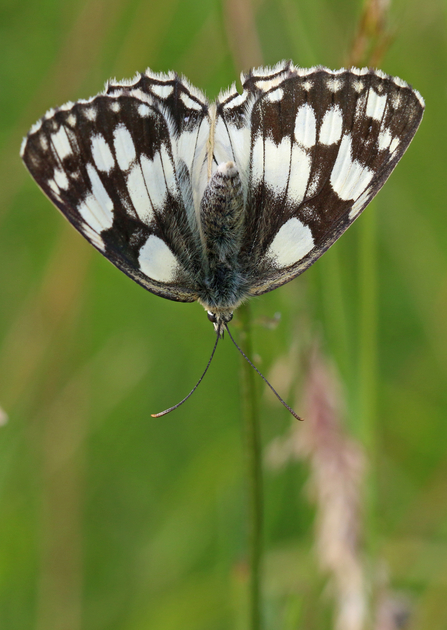As I was chatting to neighbours over our hedge yesterday, a marbled white flew past. I was delighted - the distinctive chequerboard pattern marked out one of my favourite butterflies.
I'm lucky enough that the garden backs onto a field. Although the field is frequently cut for silage or leased as a horse paddock, the edges are usually left unmown and long grass abounds - perfect for these butterflies. A brief sighting of a marbled white last year was put down to a passing individual looking for new habitat but to see one again this year was wonderful.
The first time I saw a marbled white, I was hooked. It was lazily fluttering through a shrubbery next to a meadow. I followed it for a short while, hoping to catch a photograph; a passer-by told me that I was wasting my time – marbled whites never settle. I marvelled at the name. I’d never even heard of it let alone ever seen one before. I persevered and waited for it to finally settle on a flower long enough for me to snap a couple of pictures.


